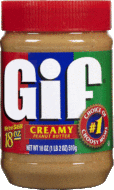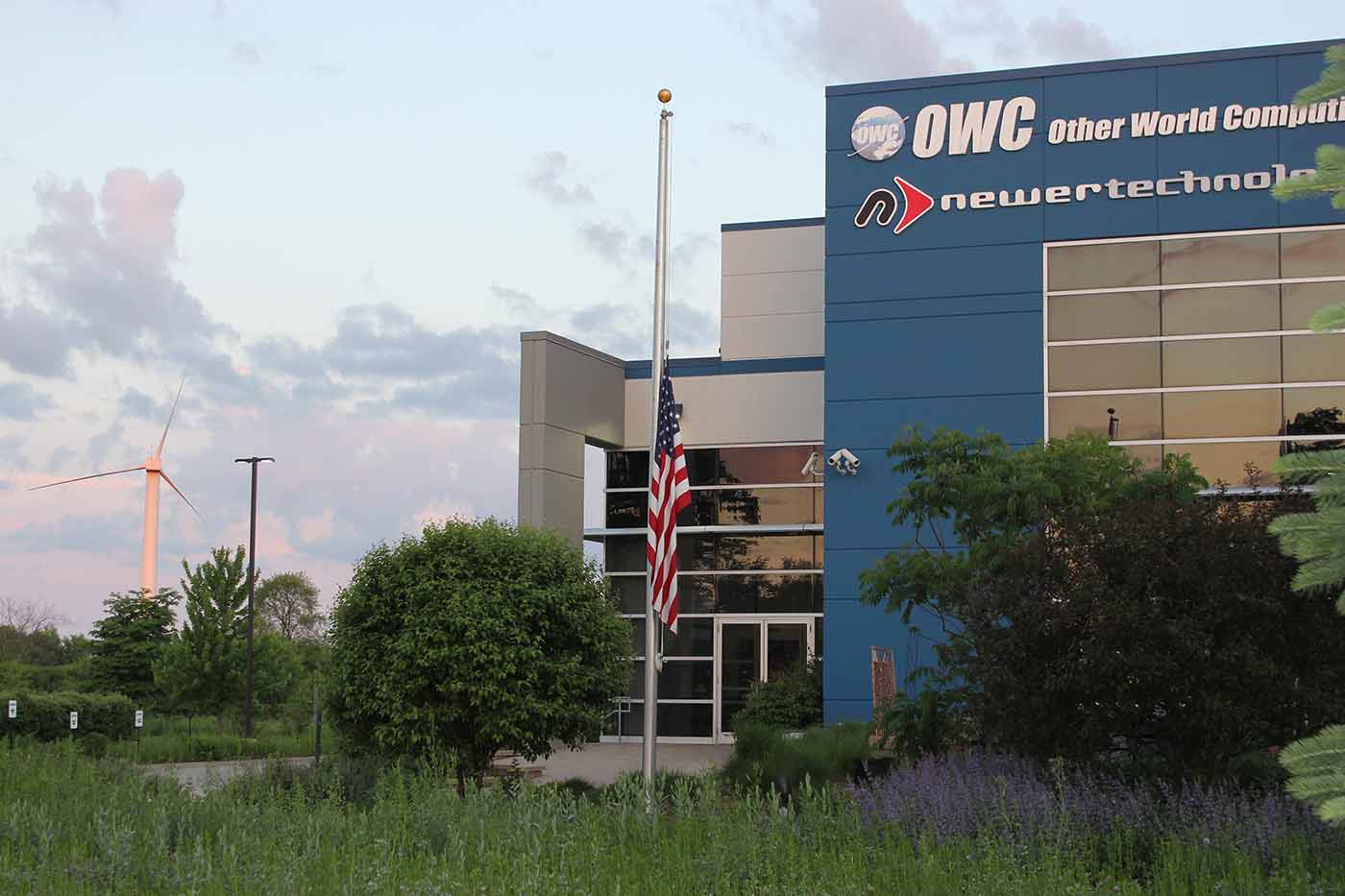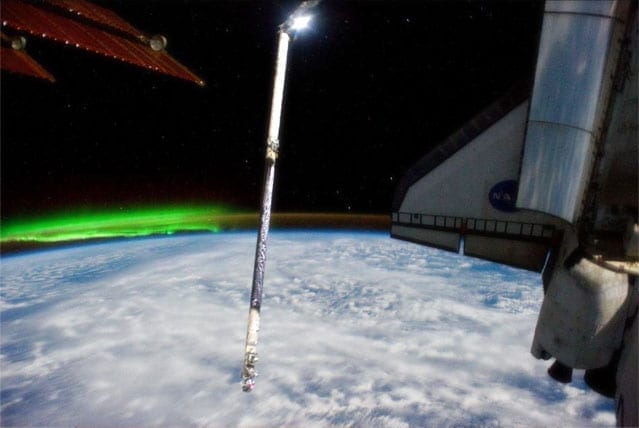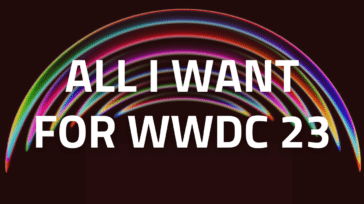
I’m on a crusade, so I’ll get right to the point. GIF is pronounced like the peanut butter: Jif.
You’re welcome.

It’s understandable that one might be tempted to entertain a hard “G” sound considering that GIF is an acronym for “Graphics Interchange Format” and not something like “Giraffe Incubation Foundation” or “Gelatinous Inscription Factor.” But if you still feel compelled to pronounce it incorrectly, you will earn the disfavor of its inventor, Steve Wilhite. As he told the NY Times:
“The Oxford English Dictionary accepts both pronunciations. They are wrong. It is a soft ‘G,’ pronounced ‘jif.’ End of story.”
There you have it, /dʒ/ wins. I mean, who’s going to argue with its creator? Until he sells the naming rights like a Major League Ballpark, shouldn’t he get to decide how it is voiced? My name is spelled M-A-R-K, but what if I told you it’s actually pronounced “Steve?” Yes, it would be quite odd and confusing, but it’s my name, so it’s my choice.
But seriously…
Though some would beg to differ, the pronunciation is not a hill to die on. There are plenty of vocal advocates (pun intended) on both sides of the debate, and I have seen many a temper flare over this issue. But I have been programming since the ’80s, working in web development and design since the birth of the World Wide Web, have wasted countless hours painstakingly creating GIFs pixel by pixel, and spent a fair amount of time in those early days interacting with other developers face-to-face, over IRC, in Usenet groups, on BBSs, and through various other forums. Not once did I ever hear of someone even think about using a hard “G.”
In fact, it was fairly well known that the GIF development team at CompuServe had a saying: “Choosy developers choose GIF,” which was a play on the slogan of a memorable peanut butter commercial at the time: “Choosy mothers choose Jif.” This was certainly to tout their superior graphics format, and whether it was intentional or not, it elucidated the intended pronunciation of their new creation. So for me and my comrades, it was never even a question. Methinks it was the latecomers to the party that started saying it incorrectly, and we seasoned veterans did not do a very good job in passing along our sage wisdom.
So basically, I’m partly to blame. And for this, I offer my sincerest of apologies. I now feel morally obligated to rectify this by repenting and shining the light of truth on this subject. Perhaps it is not too late to save a few other unsuspecting souls from blindly wandering down the dark path of mispronunciation. Yes, I am a man on a mission.
But enough about me, let’s talk about our old friend GIF.
A Brief History of the GIF
Wilhite worked for CompuServe, the first online service provider in the U.S., and developed the Graphics Interchange Format in 1987. (Support for animation and transparency was added in 1989.) He and his team were trying to find a more efficient way to display and share color image files without taking up so much darn computer memory. (A mere 3 MB of memory was more than $500 back then!)
Connection speed was also an issue because users paid for service by the hour. And dialup internet access was so painfully slow – sending a 20 KB text file to a remote colleague would give you enough time to take the dog for a walk. Forget about waiting on a 10 MB image – you might as well go on vacation.
To help solve this problem, the GIF was specifically developed to be a bitmap image format that used lossless data compression. This meant users could render high-quality graphics with much smaller file sizes. And that meant much faster transfer times and much less memory usage. Which in turn meant much happier people.
Usage Over Time
The GIF quickly became a commonly used image format when the fledgling World Wide Web came onto the scene in the early ’90s. However, things really took off in 1995 when the web browser Netscape Navigator added support for displaying the animated looping capability of GIFs. Without being able to effectively render video on the web at the time, this was at least a way to show “moving pictures” – a poor man’s video if you will.
Over the years, other image formats started gaining online ground such as the lossy JPG (Joint Photographic Experts Group) and the raster-based PNG (Portable Network Graphics). And though they didn’t support animation, the filesizes would often be much smaller and the ability to actually stream video eventually became possible. Animated GIFs were a neat little parlor trick, but for most people, there wasn’t enough practical use for them – at least not on the web.
So people’s GIF memories slowly began to fade (along with the pronunciation) until we had an entire generation who had no idea what a GIF was, let alone how to say it.
And then something happened.
Enter Social Media and Memes
The GIF has seen a massive resurgence in popularity over the last several years, thanks in large part to social media and peoples’ love affair with memes. Why say something with words, when it can be said in pictures? And why say something in pictures when it can be said with moving pictures? Especially when you can have words on moving pictures!
But one thing didn’t seem to make the glorious return with the GIF — proper pronunciation. Now, I’m not going to judge anyone for their lingual sins with respect to this particular acronym. As I stated earlier, it’s not their fault – they simply don’t know any better. But it is up to us to gently correct them lest our civil society falls into verbal chaos.
Though the days of the infamous dancing baby are (hopefully) long gone, it doesn’t look as though the GIF itself is going away anytime soon. Therefore, I invite you to join my valiant crusade to spread the good word! Just make sure you pronounce GIF correctly when you do so.
Your turn to weigh in with a quick comment! How do you think GIF should be pronounced?









I do not GENERALLY agree with the hard G pronunciation of GIF. If people were more GENTLE, went to the GYM more often, or weren’t such GERMAPHOBES, we would be better off. Perhaps if I start putting more GEL in my hair or eat more GELATIN, GYPSYS would like me. Perhaps this is a GIGANTIC GENETIC and GENERATIONAL problem. Maybe GENTLEMAN GEORGE Costanza could GENERATE more GENUINE GERIATRIC GERMANS if he GERMINATED GERANIUMS. What is my favorite GENRE? I mostly prefer GENERIC music. But, I do not GYRATE when I dance. I do not care for GIN. I love turkey, but not GIBLETS. I’ve heard GINSENG is good for you, but haven’t tried it. Did you know that there is a long GESTATION period for GERBILS? Maybe if I had more GEMSTONES or a GENIE, I could be more GENEROUS. I’m not a part of the GENTRY, but I am GENIAL. I tend to GESTURE wildly while speaking GIBBERISH that others take as a GIBE. Maybe I’ll raise a GIANT GIRAFFE in the future. It doesn’t take a GENIUS GEOLOGIST to find GINGER in their backyard. I don’t know much about GYPSUM board, GEOMETRY, GELIGNITE, or GYROSCOPES. I do love GYMKHANA videos, though. Yes to ice cream, no to GELATO.
GREETINGS! That was a GREAT comment, sure to inspire GARGANTUAN responses to your GALACTIC insights on the GREGARIOUS pronunciation of GRAPHICS acronyms.
Good grief!
This is the best OWC blog post in a long time and the thread and controversy it has produced is just pure, delicious clickbait. Love it!
Very few people understand that JPEG is pronounced with a Latino “J”… it’s actually supposed to be spoken “HAY-peg”
Sssooooooooooeeee! Heypig! Heypig! Sssooooooooeeee!
Hope you understand the reference. “Hey-pig” is how one calls hogs on a free range farm, and “Hey-peg” is just too close to ignore. =^D
(insert animated GIF of smiling pig transforming to bacon here)
Wow, that’s very interesting – I never heard that. Thanks, Franz!
Thee are but young. Indeed you are powerful, but you are not a Jedi, yet.
The G stands for Graphic, which is pronounced as a hard G. Why should it change in the acronym? It’s more consistent as a hard G.
I read a Steve Wilhite interview many years ago when he was asked about the proper pronunciation of “gif.” At that time, he said both a “g” as in “giant” and “g as in “graphic” were, in his eyes (or ears) acceptable HOWEVER HIS pronunciation of “gif” was with the “g” sounding as it does in “giant” or as the “j” in “jiffy” or, uh, “jpeg.”
Wow, that’s very interesting – I never heard that. Thanks, Franz!
It’s a hard G, exactly like, and for the same reason as, “gift”. It’s unfortunate the inventor was unfamiliar with the English language.
Hahahaha. Love it!
Not Jif. Sorry. Wrong. Who care what the inventor says, it’s Gif like in Gift.
I am sorry for Steve’s speech impediment. ;-) According to the rules of pronunciation, it’s a hard “g,” in fact, in decades of exposure to computer technology and computer graphics technology, I have never heard anyone pronounce it with a soft “g.”
Seriously, there is a good reason to pronounce it with a hard “g.” That reason is jpeg, which starts with a soft “g.” The difference in initial sound helps distinguish the two in conversation, just the difference in spelling distinguishes them in print.
I know a fellow, originally named “George,” who was convinced as a young man that it should be spelled as “Gorg,” and had it legally changed to that spelling. No one has called him George since, and he has had to accept that he is named for a Fraggle Rock character, “Junior Gorg.”
‘That reason is jpeg, which starts with a soft “g.” ‘
Erm. Technically, JPEG starts with a J. And how anybody would possibly confuse “jay-peg” with “jiff” is beyond my ken. The combined differences in vowel and number of syllables just make them entirely different words.
Don’t get me wrong. Despite the inventor of the format preferring a soft-G sound, I have always used a hard-G due to it standing for “graphics”. Were it “gelatine”, I’d use a soft-G.
I happened to be lucky enough to work at CompuServe from 1991-1996. It was nice to read this retrospective. I realize that English is a living language, but there should be no doubt that the correct pronunciation is with a soft G. CompuServe created it. CompuServe named it.
Lately, I have taken to avoiding having this discussion with others because it seems a futile effort. I have had people tell me that they don’t care how it is supposed to be pronounced… they aren’t going to change. I still get on my kids’ case when they use the hard G, but it likewise seemingly does no good. They aren’t going to listen to Dad.
One time I had someone tell me that the fact of the animated GIFs that are seeing a resurgence are somehow a different thing from non-animated GIFs. It is the animated GIF that is pronounced with a hard G. The non-animated GIFs with a soft G.
I guess the fact that I worked for the company that created the thing carries no weight with my friends and family. Oh well. I have tried to do my part.
Keep up the good fight, Jonathan!
I have to be honest – I have never heard the animated hard G vs non-animated soft G argument before. Very interesting!
Also, I don’t know how you prefer your name to be pronounced, but I think I’ll call you “Joe-Nat-Han” even if that’s incorrect, because you shouldn’t have any say in the matter. :-)
Since GIF is an acronym, and not an actual word, it can be pronounced any way you damn well please. Actually, if you really want to be an annoying nitpicker, you would insist on it being pronounced as 3 separate letters…ie. Gee-eye-eff. Have a nice day!!
I have always found it interesting that even though PNG was supposedly intended to be pronounced “ping,” most folks seem to verbalize it as “pee-en-gee” (pi-ɛn-ʤi) – where is that heated uproar?! :-)
‘I have always found it interesting that even though PNG was supposedly intended to be pronounced “ping,”’
One supposes that Wilhite prefers the soft G. It might impinge on how one pronounces ping.
I disagree, Ivan. The point of language is to communicate and be understood. When nothing is written down, pronunciation is the difference between a Night-Piker and a nitpicker.
If you don’t follow some rules and traditions in pronunciation, acronyms or otherwise, you can become less comprehensible than rhyming cockney.
Acronyms generally follow similar patterns with some being voiced by letter (Like SOS–which is never turned into a monosyllabic utterance) and say ICE (which is invariably pronounced as frozen water).
As you certainly have noticed, many acronyms come from the military like FUBAR, AWOL, RADAR, NASA, etc… Those are all pronounced as words with only one pronunciation accepted. Similarly, we have CIA, NSA, FBI, CSI and many others that are never pronounced as one word, but always spoken as letters.
[Don’t get me started on the definition of an acronyms either, which used to mean it HAD to be pronounceable as a word, but now, no longer does. Initialism, as a term, has mostly vanished and been replaced with the ubiquitous, one-size-fits-all “acronym.”]
That being said, one hopes that an agreed upon pronunciation has some relationship to the pronunciation of the longer words being represented.
The word is “Graphic,” is never pronounced with a soft “G.” Unlike Giraffe, German, and gerrymandering, the hard G is always in play. What is more likely is that programmers/gamers (the same guys that gave us PWN) just started pronouncing it incorrectly and it stuck. Thus both pronunciations are oddly considered acceptable.
GIF, with the hard “G,” has to be the first and most acceptable pronunciation. We’ll give the programming jeeks their “J” if they insist. They’re known to be quite fond of PB&Js. But otherwise, the primary pronunciation will always sound like a birthday present missing a “T” at the end.
…
I’ve only heard ‘noobs’ (read: post-80s) pronounce it with a hard-G, and get all indignant and pedantic when told otherwise. Ivan is right; the ‘rules’ on pronunciation for acronyms are not consistent, and operate mostly by convention. In this case, the convention was set years before many people in this war were born.
BTW, most people technically pronounce ‘Linux’ wrong for a similar reason. ;-)
Too old to be noob, sonny boy! LOL!
Either way, there are 2 accepted pronunciations, and as someone earlier said, it’s unfortunate they didn’t know how to correctly pronounce their own acronym.
Try 1970s; I did my first programming when FORTRAN wasn’t even THREETRAN. No noob, just young whippersnappers thinking they know the only one, right, and true way.
If English were a phonetic language, it would be perfect. There is a London club that proposes that.
Arrrgghhh…
After years of comparing “GIF” with “GIFT” (hard G), and noting that “Graphics Interchange Format” starts with a hard G, you now come up with the first cogent and valid argument I’ve seen for using a soft G.
I started programming in the 70’s. It may take me a few decades to accept this change…
Haha – welcome to the family! :-)
“GIF is pronounced like the peanut butter. Jif.” So spell it that way!
Greg which isn’t pronounced Jreg. The originator doesn’t control how English is pronounced. Has he mandated that Graphics is pronounced Jraphics?
“they simply don’t know any better” How do you know?
Jreat to meetcha, Jreg! Haha! Jood one!
Jotta Jo, but gust wanted to say how jlad I was you’ve jot such jood jrammar.
Perhaps the originator of GIF was a speed talker who said Gee-Eye-Eff so fast that people thought he was saying JIF.
For me, it always was, is now, and forever shall be GIF with a hardened G. I have been in the graphic arts business since 1974, so don’t tell me I’m a noob. Graphics Interchange Format = GIF.
You go buy Ghee (clarified butter) from the store and as soft as it is, no one says Jee.
Calling it JIF was a gaffe.
Enough of this guff.
Unless you want to start saying “Jiraffics Interchange…,” GIF, with a hard G, has to remain the standard.
I can live with a J as an alternate pronunciation, but otherwise, it’s just peanut butter or measure of speed.